Did you know that nearly 85% of professional snooker frames are decided by a single series of strategic moves, not just potting ability? Whether you’re an avid snooker player or looking to improve your snooker game, mastering snooker strategy can dramatically elevate your results on the snooker table. This comprehensive guide pulls back the curtain on the tactical elements, mental approaches, and expert techniques that separate champions from the pack. Dive in to discover actionable insights and take your snooker play from casual to pro-level precision.
Mastering Snooker Strategy: The Key Elements Behind Every Pro-Level Win
Success in snooker strategy is no accident—it's the result of deliberate decisions and sharp focus. Every shot on the snooker table demands both technical skill and strategic thinking. Elite snooker players don’t just rely on instinct; they exercise a meticulous approach to shot selection and safety play, understanding when to take risks and when to defend. They consistently weigh the pros and cons of each potential shot, factoring in cue ball control , the positions of each object ball, and their opponent’s likely responses.
For those new to advanced cue sport tactics, the pathway begins with familiarizing yourself with foundational concepts, such as reading the table layout, analyzing the current sequence of play, and predicting outcomes several shots ahead. Practical examples, such as recognizing when to attempt a break-building run versus implementing a tight safety, show that snooker requires mental agility and creative thinking as much as physical prowess. With these core elements in mind, anyone can start to analyze the game as the professionals do.
Whether your goal is to score more points in each frame, leave your opponent snookered after a tough safety shot, or simply improve your game , understanding these key elements is essential. Over the next sections, we’ll explore actionable steps, drills, and strategic advice you can immediately bring to the next snooker match—setting the stage for solid wins and long-term improvement.
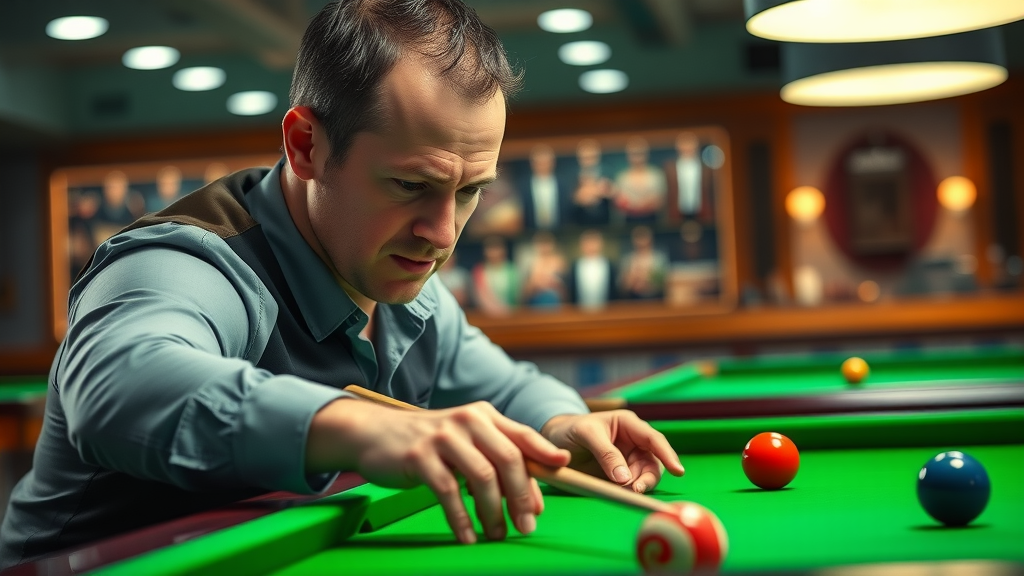
- Understand the foundations of advanced snooker strategy
- Discover the decision-making processes behind shot selection
- Learn expert tactics for cue ball control and safety play
- Analyze case studies of professional snooker players
- Absorb actionable tips to improve your snooker performance instantly
Why Snooker Strategy Sets Champions Apart: Stats, Science, and the Competitive Edge
Snooker strategy isn’t just about making good shots—it’s about outthinking your competition and making fewer mistakes than they do. Data from elite tournaments reveal that championship-level snooker players achieve notably higher shot selection success rates compared to average competitors. This scientific edge is grounded in experience, pattern recognition, and acute ball control—allowing champions to navigate even the toughest situations on the snooker table with poise.
The science of snooker play extends beyond simple technique. Modern analytics allow coaches and sports scientists to analyze every movement, angle, and shot selection a player makes throughout a frame. Professionals often use data-driven insights to refine their tactics, studying their own play and their rivals to identify gaps in safety play or weaknesses in offensive potting. This analytical mindset provides a competitive edge—enabling players to adapt on the fly and consistently outmaneuver their opponents.
By examining statistics such as potting percentages, average cue ball travel, and frame-winning break counts, players can measure their progress and identify areas for immediate improvement. Incorporating these scientific principles into your approach to the game can transform your mindset and lead to greater consistency in your snooker strategy execution and results.
| Player Name | Shot Selection Success Rate | Average Break Score | Recent Tournament Outcomes |
|---|---|---|---|
| Stephen Hendry | 92% | 68 | Champion |
| Ronnie O’Sullivan | 94% | 74 | Finalist |
| Judd Trump | 89% | 59 | Semi-finalist |
| Average Amateur | 71% | 28 | Qualifying Rounds |

Foundations of Snooker Play: Developing a Winning Mindset
The mental aspect of snooker play is as vital as technical skill. The best snooker players approach each match with unwavering belief, resilience, and the ability to remain calm under pressure. Stay focused —a single lapse in concentration can quickly swing the momentum. Cultivating a winning mindset means committing to improvement, whether you’re playing a local club game or a tournament final.
Mental preparation includes deep breathing techniques, visualization of successful frames, and quickly shifting focus after missed opportunities. Many professional snooker players routinely practice these methods to build muscle memory not only for shots but for their decision-making processes. What sets champions apart is their consistent ability to learn from each game, adjusting their snooker strategy to counter new challenges.
By adopting a growth mindset and treating losses as valuable feedback, you create space for continuous progress. If you want to improve your snooker in a lasting way, focus on your mental resilience as much as your technical drills in the practice room.
"The difference between winning and losing often comes down to a few smart moves—the right snooker strategy at the right moment." – Former World Champion Snooker Player
Understanding the Snooker Table for Strategic Advantage
Reading the Snooker Table Layout
Every snooker player must be able to assess the snooker table’s layout at the start of their visit. Identifying the arrangement of object balls and understanding how they interact with the cue ball is foundational for effective snooker strategy . Whether setting up for a break, navigating clusters, or finding the safest angle, a careful read of the table lets you anticipate your next few shots rather than react on the fly.
Seasoned players know that the initial position of reds, the weaving points of colored balls, and available pocket choices all influence which shot to play next. By planning two or three moves in advance, you increase both your efficiency and scoring potential. Observing top pros reveals consistent patterns: they break clusters at high-scoring opportunities while ensuring a path for the cue ball to the next object ball, avoiding unnecessary risks.

Common Mistakes on the Snooker Table
Even advanced players are prone to simple errors that jeopardize solid frames. One frequent oversight is overlooking angles —a rushed assessment can cause missed pots or leave the cue ball vulnerable. Ignoring cluster situations can trap you into tricky predicaments, forcing difficult recovery shots. Another common mistake is failing to control the cue ball after potting, making each subsequent shot more difficult.
A successful approach to the game requires persistent awareness of both your opportunities and obstacles. By sharpening your regular table reads and addressing these frequent mistakes, you add powerful new layers to your snooker strategy. Continuous self-reflection and humble correction are the hallmarks of every great snooker player—champions never stop learning.
- Overlooking angles
- Ignoring cluster situations
- Failing to control the cue ball after a shot
Shot Selection Masterclass: Raising the Standard of Your Snooker Play
Evaluating Offense vs. Defense
Every frame offers moments where a snooker player must choose between attacking for points and playing for safety. In offensive situations, precision cue ball control and an accurate read of object balls are crucial—aggressive shot choices should be backed by a high chance of success and favorable leave (the position in which you leave the cue ball after potting). When the odds are not in your favor, experienced snooker players often turn to defense, playing calculated safety shots designed to leave the cue ball in a difficult position for their opponent.
The key to sophisticated shot selection is adaptability: read each unique layout, evaluate the risks of missing, and swiftly determine whether to attack or play safe. During high-stakes snooker matches, pros weigh offensive gains against the dangers of an easy return for the other player. By developing your own systematic approach to each shot—offensive or defensive—you can raise your game to new heights.
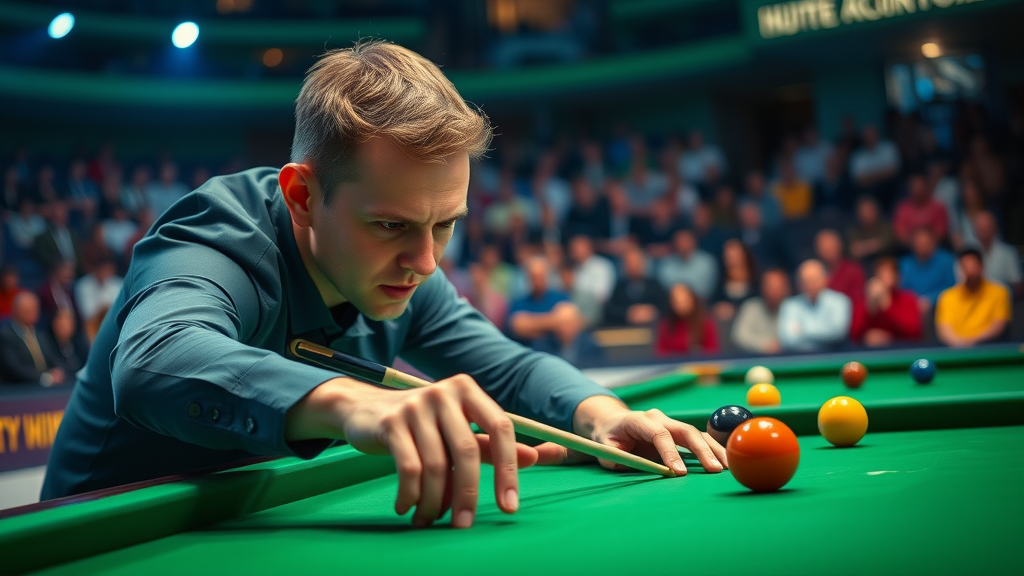
Practical Shot Selection Drills
Building the ability to make smart decisions under pressure comes from targeted practice. Adopting drills that simulate match conditions helps to cement the right shot selection habits. Start with the three-ball sequence drill, where you pot three balls in a chosen order while maintaining cue ball position for the next shot—it strengthens both offensive and defensive skills. Positional play scrimmages—where you set up difficult table layouts—teach you to tackle tricky situations and recover from errors.
Simulated matchplay scenarios are invaluable for honing your instinctive decisions. Create specific situations where you must choose between attacking and crafting a safety shot, then review your outcomes to see which strategy brings consistent success. Over time, these drills embed powerful strategic elements in your game, making you better equipped for real-world matches.
- Three-ball sequence practice
- Positional play scrimmages
- Simulated matchplay scenarios
Cue Ball and Object Ball Mastery: Precision in Ball Control
Understanding Cue Ball Control
The heart of every elite snooker strategy is cue ball control . It’s not enough to pot balls—the way you leave the cue ball for your next shot determines your ability to dominate frames. Top snooker players excel by considering both the immediate pot and the long-term flow of the game. They study the effects of varying cue speeds, spin, and striking position on the cue ball, developing a touch so refined they seem to maneuver the ball at will.
Sound cue ball control means anticipating the direction and speed of both the cue ball and the struck object ball. When mastered, this grants the ability to chain pots together, break up difficult clusters, and keep opponents on the defensive. The practical result? More frequent high breaks and a higher chance of smoothly clearing tables.
Striking the Cue Ball for Maximum Effect
The secret to world-class ball control begins with a consistent, deliberate stroke when striking the cue ball . The position of your strike—whether center, high, low, or with side spin—has a dramatic effect on how the cue ball travels after impact. Practicing accurate striking builds confidence, ensures better positional play, and reduces unforced errors.
Elite snooker players devote time to mastering various spins and speeds, aiming for precision rather than brute force. Developing a repeatable technique enables players to maneuver the cue ball for desired effects, whether for safety play or aggressive break-building. Remember: each shot is a chance to leave the cue ball in a position that maximizes your options and minimizes risk for your opponent.

Heart of the Game: Object Ball Placement
Understanding how the cue ball interacts with the object ball is crucial for any snooker player seeking to master positional play. The angle at which you strike the object ball determines not only whether the shot is potted but also the subsequent arrangement of balls across the snooker table. Developing precision in object ball placement allows a player to set up straightforward follow-up shots, build pressure during safety play, or open up scoring opportunities in a previously defensive frame.
Consistent object ball placement comes from practice and a clear game plan for each frame. By studying the approaches of top snooker players, you’ll notice their habit of choosing routes that leave the cue ball with multiple potting options or in a safe zone if the shot fails. Incorporating these habits into your own snooker strategy can yield dramatic improvements in your scoring and frame-winning potential.
Safety Play Techniques: Outmaneuvering Opponents Like a Pro
Constructing Effective Safety Shots
Effective safety play distinguishes champions from the rest. The aim is to leave the cue ball where your opponent faces only risky or low-percentage shots. Constructing a strong safety shot means calculating angles, speed, and spin to ensure the cue ball and object balls end up in positions that limit your opponent’s options. Well-executed safety play can quickly force errors, hand over the advantage, and even determine the outcome of a tight snooker match.
Professional snooker players develop a rich repertoire of safety shots for all table layouts. From basic rolls behind colored balls to complex snookers using the baulk cushion, these shots are essential for building pressure. The more you practice safety play, the more confident you’ll become in using it proactively as a strategic weapon, not just a last resort when potting feels unsafe.
Ball Control Tactics during Safety Play
Mastering ball control during safety play is about subtlety—moving both cue ball and object balls into strategic positions that limit your opponent’s attacking chances. Small differences in speed or spin can be the distinction between a successful positional shot and handing back control to your competitor. Focus on practicing shots that bring the cue ball close to cushions and hide it behind obstacles, minimizing the risk of unintended opportunities.
As your skill grows, you’ll develop an intuition for how to manipulate the entire table, not just a single shot. Always watch how professional snooker players use layered safety play and positional awareness to gain psychological advantages and dictate the flow of play.
Psychology of Safety: How Pro Snooker Players Force Mistakes
The mental game of snooker reaches its pinnacle during extended safety exchanges. Top snooker players leverage safety play to apply pressure, disrupt momentum, and coax unforced errors from their opponents. By varying the pace, rhythm, and complexity of their safety shots, they force others out of their comfort zones and into rushed decisions. This psychological edge is often just as effective as technical skill in determining who ultimately wins a frame.
Strategic use of safety shots not only limits your rival’s options but also instills doubt in their decision-making process. The pros are relentless—forcing opponents to take on low-percentage pots or risky escapes, eventually capitalizing on any mistakes. Incorporate this mindset into your own approach, and you’ll find yourself winning frames before the balls are even potted.
Demonstration: Pro Snooker Players Breaking Down Safety Play Tactics
Advanced Tactics in Snooker Play: When Strategy Meets Skill
Combinations, Cannons, and Plant Shots
A hallmark of world-class snooker strategy is expertly incorporating advanced shot types at key moments. Combinations (using one object ball to pot another), cannons (driving the cue ball into a cluster of balls to create scoring opportunities), and plant shots (potting a ball that’s not directly struck by the cue ball) are powerful tools to break open tight frames and stage dramatic comebacks.
Knowing when to use each shot type is a result of refined experience and tactical thinking. Watch for moments when clusters block your path or when simple pots are unavailable—this is where a creative combination or a calculated cannon can shift the match in your favor. By practicing these shots, you’ll begin to spot opportunities to change the table dynamic and maintain the upper hand.
- Key types of advanced shots
- When and why to use each shot type
- Incorporating advanced shots into your snooker strategy
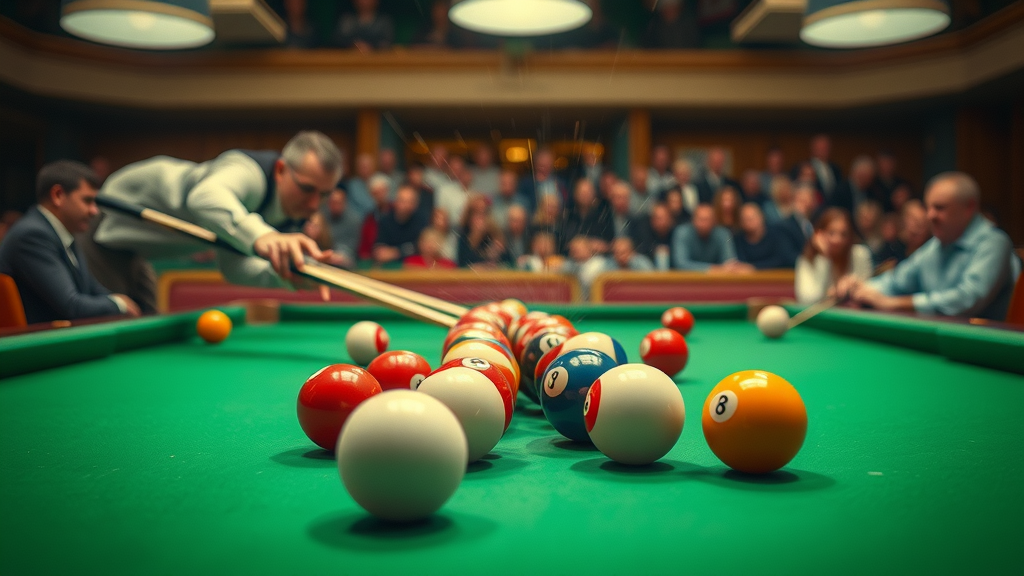
Tactical Break-Building
Building high scoring breaks is both an art and a science. It demands ineffable cue ball control, acute positional play, and the vision to always plan multiple shots ahead. Each shot you take should leave the cue ball in an advantageous position for the next, preventing awkward angles and maximizing your scoring potential.
For developing a successful break-building strategy, focus on controlling pace and spin, exploiting loose reds, and maintaining discipline even when the table appears straightforward. The ability to consistently construct breaks raises your status as a snooker player and adds an invaluable component to your overall snooker strategy .
Shot-by-Shot Breakdown: Legendary Snooker Players’ Winning Moves
Case Study: Shot Selection During Title-Clinching Frames
To fully understand professional snooker strategy, dissect moments from iconic matches—especially final frame deciders. In world finals, snooker players such as Stephen Hendry and Ronnie O’Sullivan demonstrate a masterclass in shot selection: seamlessly transitioning between offense and defense, controlling the cue ball, and executing high-stakes safety play. They often make unconventional choices—like opting for safety when an aggressive shot seems tempting—revealing the depth of their strategic acumen.
Breakdowns of these frames show how each shot to play is rooted in long-term planning and situational awareness. Observing these moments and practicing their thought processes can significantly influence how you approach each frame, helping you adopt winning habits in your own snooker play.
| Frame | Key Shot Selection | Tactical Intent | Outcome |
|---|---|---|---|
| Frame 25 | Defensive Safety to Baulk | Reduce Opponent’s Scoring Options | Opponent Leaves Red Open |
| Frame 26 | Precise Pot, Side Spin for Position | Begin Break-Building | High Score |
| Frame 27 | Plant Shot to Break Cluster | Open Scoring Area | Wins Frame |
Analyzing Cue Ball Routes Used by Pros
The cue ball routes chosen by legendary snooker players offer insight into how advanced pattern recognition and forward planning win frames. Mapping these paths shows the subtle use of speed, angles, and spin to maneuver the cue ball around color balls and into favorable positions. This skill is foundational for high-level snooker strategy and is routinely practiced by professionals looking to refine their tactical prowess.
Studying slow-motion replays of famous breaks helps you internalize the optimal movements and apply similar tactics to your own games. By emulating these routes in your practice sessions, you bridge the gap between theory and application—taking measurable steps towards more consistent performances.
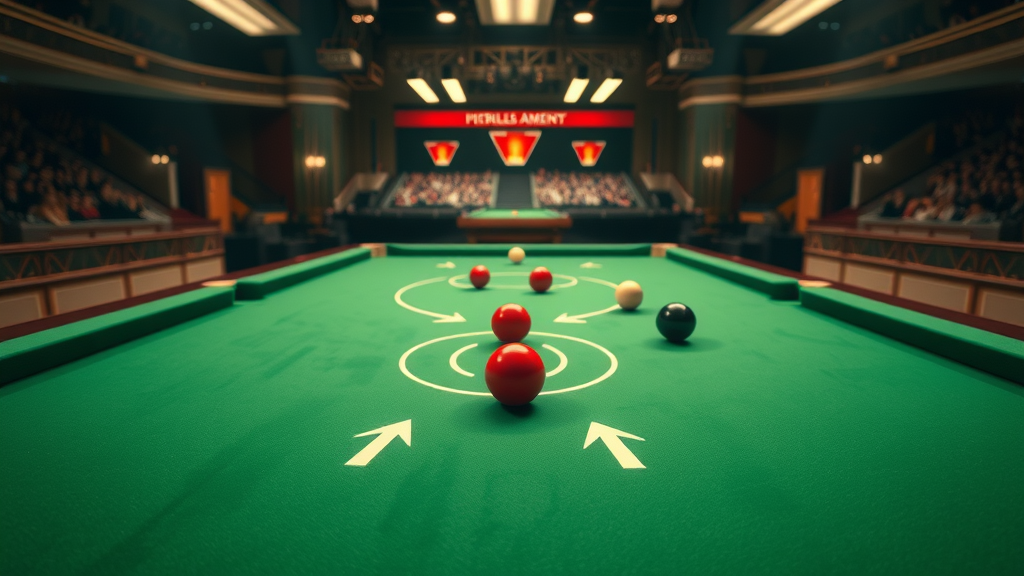
Improving Your Snooker: Actionable Drills and Practice Tips
Routine for Daily Improvement
Improvement comes from deliberate practice and measuring your snooker progress. Begin each session with 30-minute cue ball exercises focused on controlled movement across the table. Follow this with shot selection shadow play, where you rehearse different decisions without actually striking the balls—building muscle memory for strategic choices.
Add end-of-frame safety drills to test your situational awareness under realistic pressures. Rotating these practice elements ensures you develop a balanced set of offensive and defensive strengths, boosting your confidence as a snooker player. Consistency is vital for translating practice gains into tournament results.
- 30-minute cue ball exercises
- Shot selection shadow play
- End-of-frame safety drills
Tracking Your Progress Like a Snooker Player
The best way to measure your journey toward mastery is to maintain a training log—recording daily scores, success rates with different shot types, and notes on tactical decisions. By regularly tracking your improvement, you gain clarity on strengths to maintain and weaknesses to address. Top snooker players often utilize video analysis and detailed statistics to pinpoint where their snooker strategy needs refining.
Reviewing your logs helps set meaningful practice objectives—such as cue ball control targets or safety play consistency—facilitating steady growth. Over time, you’ll discover that even small changes bring major improvements, helping you outplay your competition.

"Consistency, not talent, separates average snooker players from future champions." – Elite Snooker Coach
Adapting Snooker Strategy Across Different Playing Conditions
Adjusting for Table and Ball Conditions
Every snooker table and set of balls plays a little differently, so being able to adapt your snooker strategy to playing conditions is vital. On slow tables, the cue ball might not travel as far without extra force, requiring changes in striking the cue. Fast tables need lighter touches to avoid overshooting and compromising position.
The type of chalk and the cloth covering the snooker table can also affect cue ball grip, spin, and overall control. Testing conditions at the start of each session empowers you to make fast adjustments and stay ahead of your opponents—turning unfamiliar environments into a source of competitive advantage.
- Managing cue ball movement on slow vs. fast snooker tables
- Reacting to different chalks and cloth types
Personalizing Your Strategy for Competition
No two opponents or matches are ever quite the same, so flexibility in your approach is essential. Assess your opponents’ strengths and weaknesses, adapting your own playstyle and snooker strategy to exploit gaps in their game. For example, if your opponent struggles with safety play, focus on precise ball control and forcing long escapes.
Regularly revise your competition strategies, incorporate new tactics from recent matches, and set up your practice area to simulate different conditions (including lighting and noise). The more confident you become at adapting on the fly, the closer you are to developing a truly championship mindset.
Guide: Setting Up Your Practice Area for Optimal Snooker Strategy Training
People Also Ask: Top Questions About Snooker Strategy
What is the trick to snooker aiming?
The key trick to snooker aiming is mastering the alignment of your cue, eyes, and the object ball. Focus on delivering a straight cue action, keeping your head still, and visualizing the contact point on both balls before executing the shot. Regular aiming routines and shadow play build consistency and accuracy in potting balls.
What are the tactics for snooker?
Snooker tactics revolve around a balance of offense and defense—knowing when to attack, selecting the right safety shot, and controlling the cue ball for favorable positions. Effective tactics include break-building, cluster management, advanced safety play, and adapting quickly to the opponent’s strengths and the table’s unique characteristics.
How do I get better at snooker?
To improve your snooker , dedicate daily time to mastering cue ball and object ball control, develop a consistent pre-shot routine, and practice drills that sharpen your shot selection. Additionally, analyze videos of professional snooker players, track your progress, and play regularly under varying conditions to build adaptability and confidence.
What is the 3 rule in snooker?
The 3-miss rule applies when a player fails to hit the required object ball on three successive attempts from the same position during a snooker frame. After the third miss, the frame may be awarded to the opponent, emphasizing the importance of precise cue ball control and careful shot planning during critical moments.
Expert Answers to Common Snooker Strategy FAQs
- How do professional snooker players practice safety play? Pros use structured drills that mimic competitive layouts, focusing on hiding the cue ball behind obstacles and forcing awkward returns. Frequent practice conditions players to react effectively during tight matches.
- What is the best way to plan a break? The best break planning starts with an in-depth table read, selecting routes with multiple options and prioritizing cue ball control to string together pots and open up the table for ongoing scoring.
- How can I improve my cue ball control? Repetition is key—develop drills that focus on stopping, rolling, drawing, and spinning the cue ball, and couple these with feedback through video analysis or a training log to monitor subtle improvements.
Essential Tips to Improve Your Snooker: From Theory to Successful Execution
- Always play with purpose; plan two shots ahead
- Prioritize cue ball control over potting difficult balls
- Practice a range of safety play techniques
- Review footage of top snooker players for new ideas
- Remain adaptable and refine your snooker strategy regularly
Final Analysis: The Formula for Consistently Outplaying Opponents in Snooker
Develop a disciplined snooker strategy, focus relentlessly on cue ball control, and adapt to all conditions—these steps ensure you outsmart and outscore your competition at every level.
 Add Row
Add Row  Add
Add 
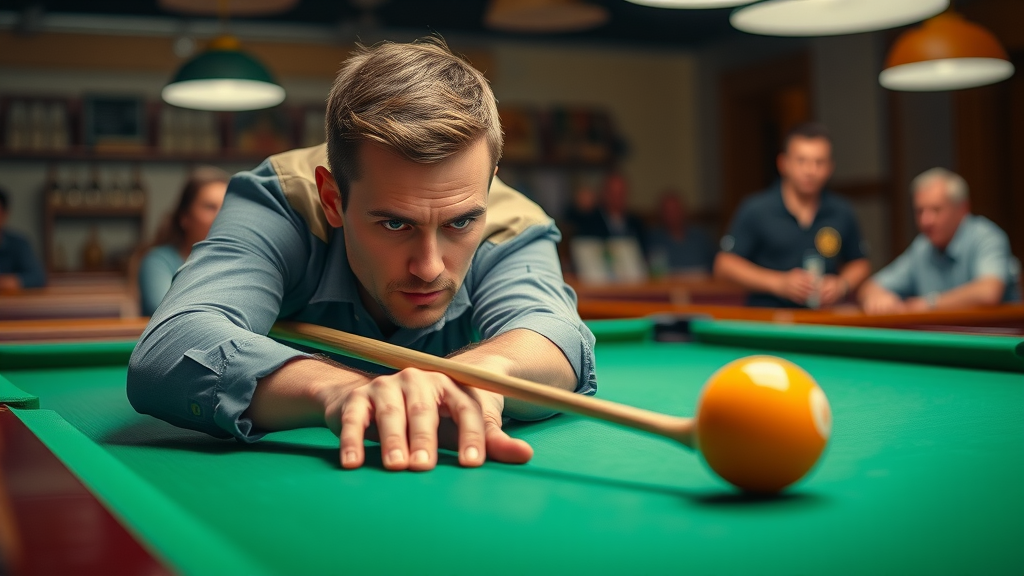

Write A Comment